Sernik is a delicious Polish cheesecake. It’s my grandma’s recipe and one of my favorite desserts of all time! It’s made with cocoa crust and rich and creamy cheese filling.
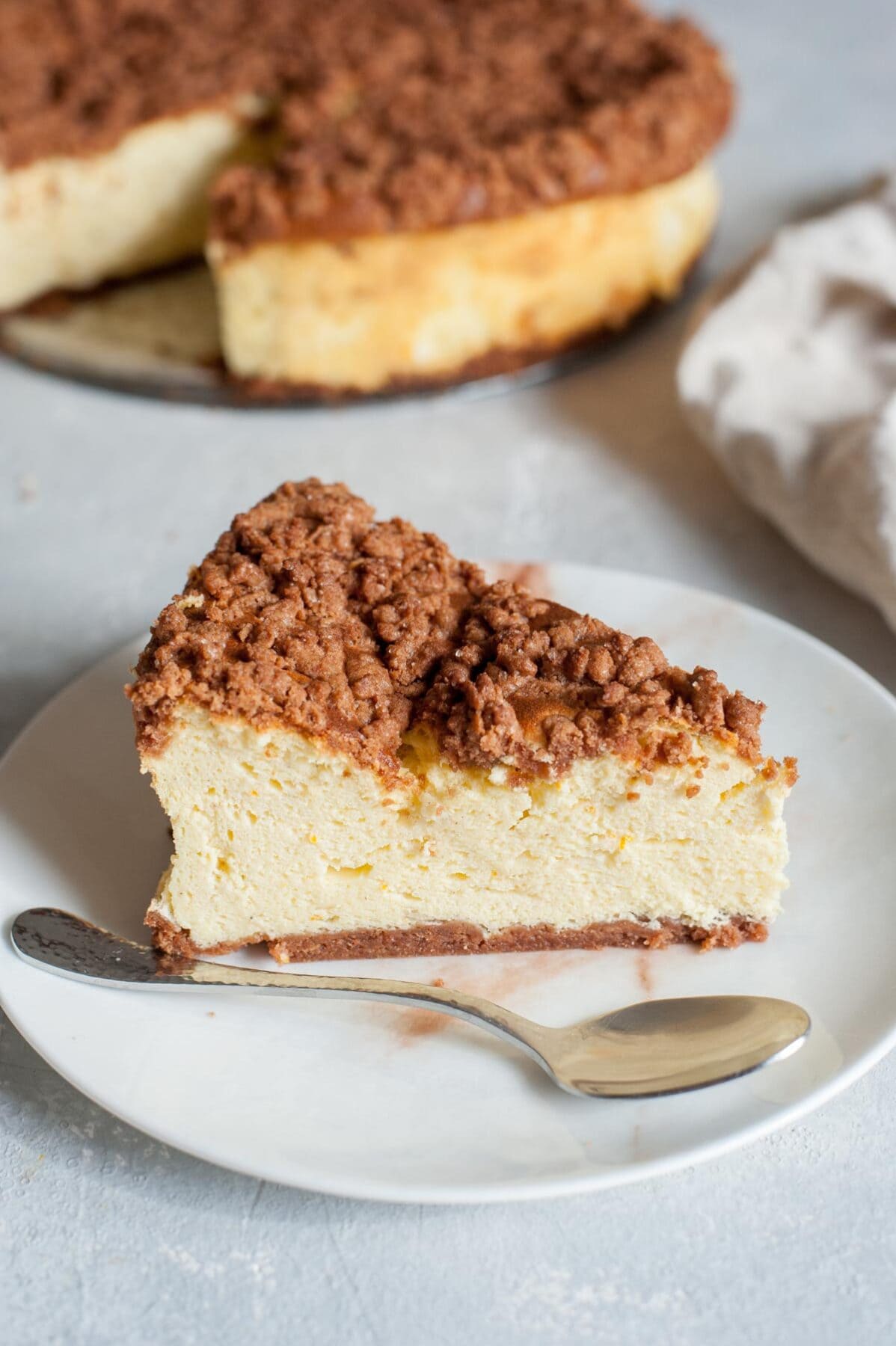
Polish cheesecake
Sernik is one of the most popular desserts in Poland. The word sernik means cheesecake in the Polish language. There are so many types of cheesecake and every family has their own favorite recipe! This particular cheesecake is called King’s cheesecake (sernik królewski) and it’s made with cocoa crust on the top and the bottom of the cheesecake filling. The cheese part is made from Polish curd cheese (twaróg), which is very similar to farmer’s cheese. Some people add raisins or canned peaches to this cheesecake. My grandma has always added candied orange peel and raisins.
This is an old-school type of cheesecake, it’s more dense and rich (but in a good sense!) than fluffy and creamy. Nowadays, many young Polish people are making their cheesecakes with other types of cheeses, like they mix twarog cheese with ricotta or mascarpone, and I also like these type of cheesecakes, but this old-school type of cheesecake is seriously my favorite one and it just screams comfort food (or dessert) for me.
Polish cheesecake vs New York style cheesecake:
You may ask what’s so special about Polish cheesecake. Aside from the cheese it’s made from, it’s not so creamy, smooth, and heavy as New York-style cheesecake, it’s based more on eggs and butter and no cream or sour cream is added. It’s also, like many Polish desserts, less sweet than its American counterpart. King’s cheesecake is more fluffy thanks to beaten egg whites, not completely smooth, tastes more of cheese, is less dense and rich. It’s really hard to describe it with words so you have to try it!
Ingredients
Here’s what you need to make the cocoa crust for cheesecake:
- all-purpose flour
- cocoa – I used Dutch-processed but any kind will work, Dutch-processed cocoa is more chocolatey and flavorful, it’s also what you would use to make this crust in Poland (there is no natural cocoa powder in Poland)
- butter – use European-style butter for better flavor (European butter has slightly more fat and it’s cultured which means it tastes a little bit more tangy)
- granulated (white) sugar
- sour cream
- egg yolk (reserve the egg white for the cheesecake batter)
- baking powder – makes the crust softer, it’s optional
- vanilla extract – in Poland, vanilla sugar is most commonly used for baked goods but I used vanilla extract since it’s easier to get in the US
- salt
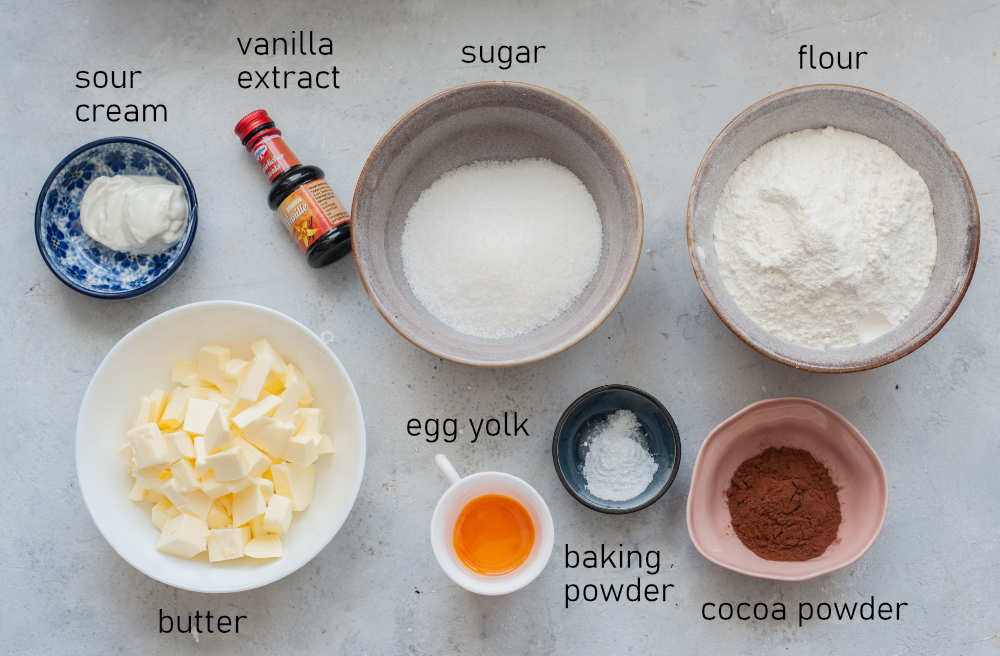
For the cheesecake you’ll need:
- Twaróg cheese – since this is the main ingredient that distinguishes this cheesecake from other types of cheesecake, it can’t be substituted. I mean, you could use cream cheese, but it just won’t be the same. You can use farmer’s cheese but if it’s very dry, you may need to add a little bit more butter. You can look for twarog cheese in Polish/Russian/Ukrainian delis. This is a curd cheese, which means it’s made from small curds that are sticking to each other, we need to puree it with a food processor until smooth. Polish people usually use a meat grinder for that, but I think it’s easier to use a food processor (it’s being said that you need to put it 3 times through a meat grinder to get it smooth and fluffy). The cheese doesn’t have to be completely smooth and velvety like cream cheese. Polish people often buy already-processed twaróg in a 'bucket’ that is already smooth and mixed with butter. It’s quicker to make a cheesecake with already processed cheese but it tastes better with pure twaróg. Also, there are many brands that are low-quality and the cheese is very watery. If you can get such cheese in a Polish deli, do not use it for this particular recipe, I’m not sure if it will work.
- Eggs – there are quite a lot of eggs in this cheesecake but grandma says she sometimes adds 10-12 eggs with this recipe! I tried adding less but it really hasn’t tasted 'right’. Don’t try to add more eggs than written in the recipe if you’re using 10-inch (26cm) pan – the batter won’t fit in the pan.
- Vanilla extract – in Poland, vanilla sugar is most commonly used for baked goods but I used vanilla extract since it’s easier to get in the US.
- Butter – use European-style butter for better flavor (European butter has slightly more fat and it’s cultured which means it tastes a little bit more tangy)
- granulated (white) sugar
- Orange peel – for an amazing flavor, you could also add candied orange peel if you have some on hand.
- You could also add raisins or canned peaches – they are often added to this particular type of cheesecake.
- Instant vanilla pudding powder – makes the cheesecake set and adds more vanilla flavor. Mine has just corn starch and ground vanilla beans in the ingredients so you can substitute corn starch and 1 ts of vanilla extract.
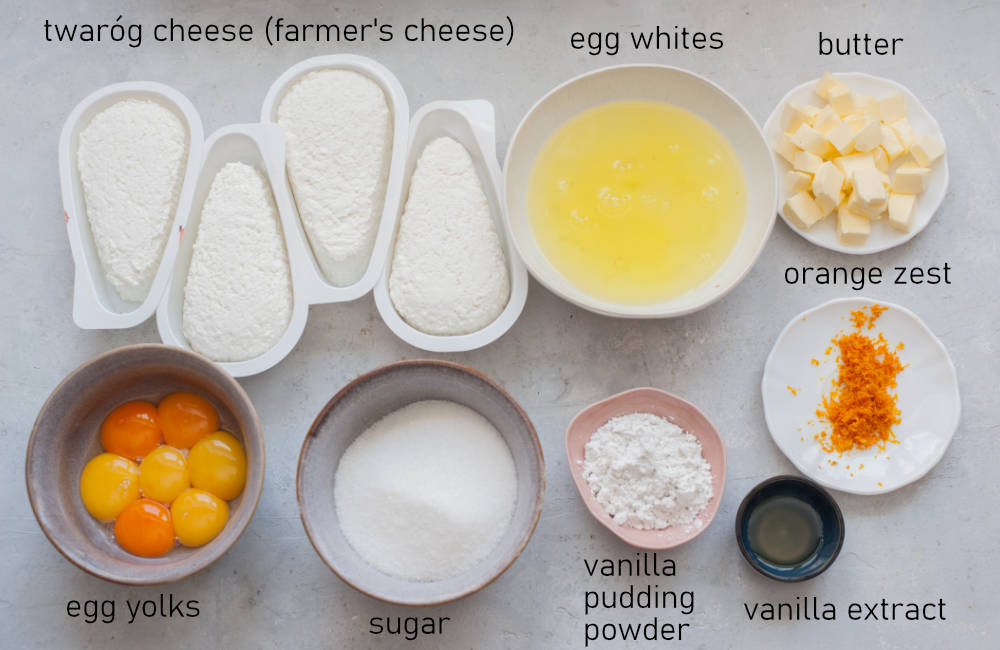
How to make it step by step
Make the crust:

1) Stir the flour, cocoa powder, sugar, baking powder, and salt together.
2) Add the egg yolk (reserve the egg white for the cheesecake batter), sour cream, vanilla extract, and cold butter (cut into small cubes).
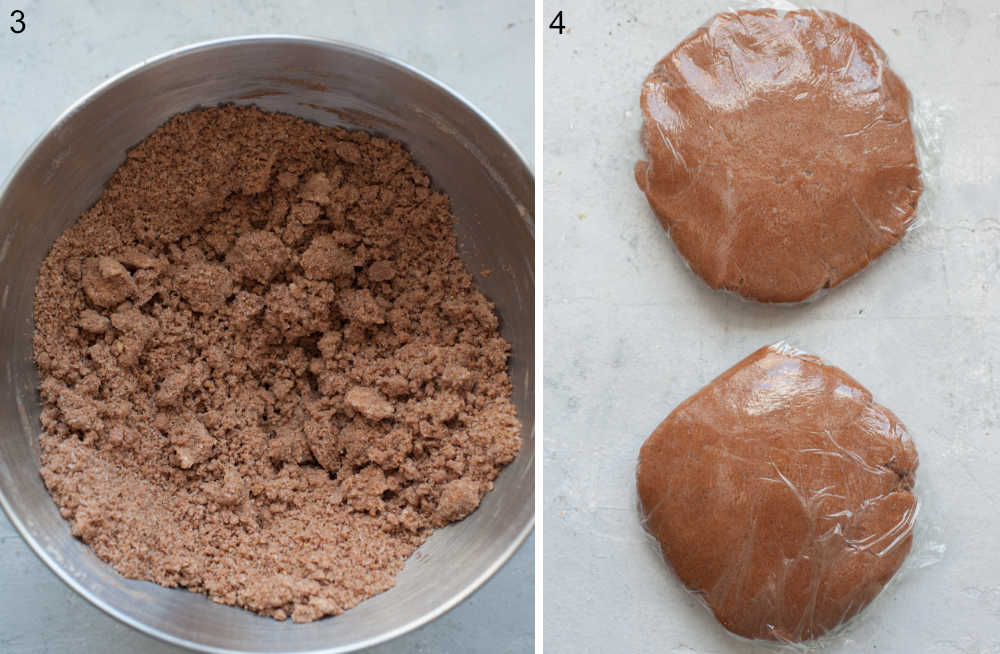
3) Rub the ingredients between your fingers or mix with a stand mixer fitted with a paddle attachment until the dough comes together. It will look crumbly at first but it will soon form a smooth dough.
4) Divide the dough into two parts. One part should be slightly bigger than the other part (about 1-2 Tbsp), flatten each part into a disc, wrap in plastic foil and put in a fridge for 30 minutes.
Bake the crust:
Preheat the oven to 350°F (180°C), Gas Mark 4, no fan.
Line the bottom of an 10-inch (26cm) springform pan with parchment paper.
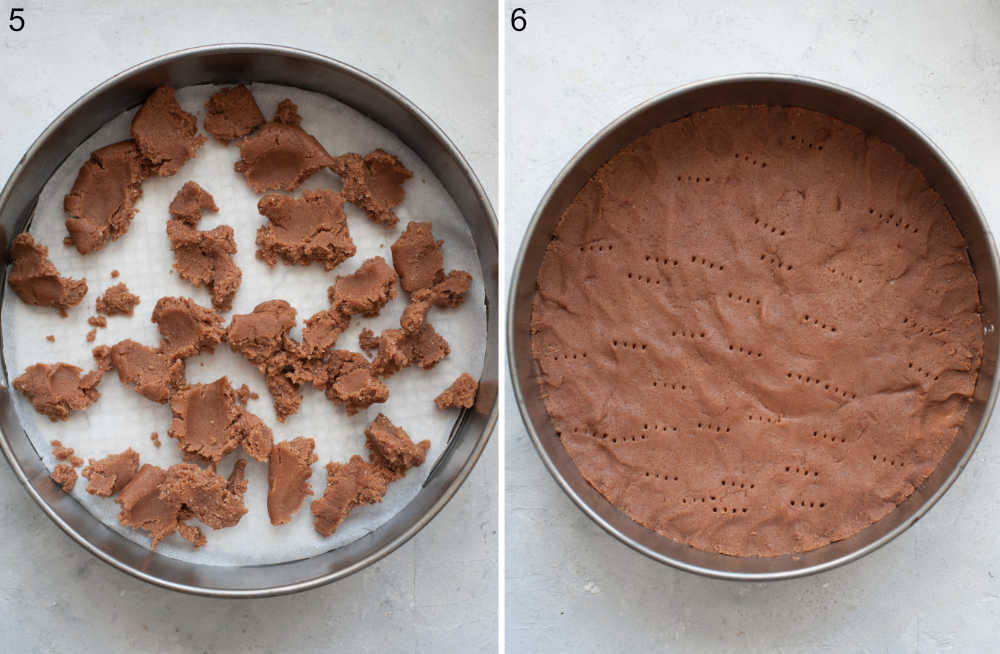
5) Take the larger part of the crust out of the fridge and tear it into pieces (or cut with a knife if it’s too firm).
6) Flatten the pieces and press them into the pan to cover its bottom. Prick the crust with a fork several times. Bake the crust for 15 minutes.
While the crust is baking make the cheesecake batter.
Make the cheesecake:
Separate the eggs into egg yolks and egg whites. Make sure there is no egg yolk in the egg whites or you won’t be able to beat them properly.
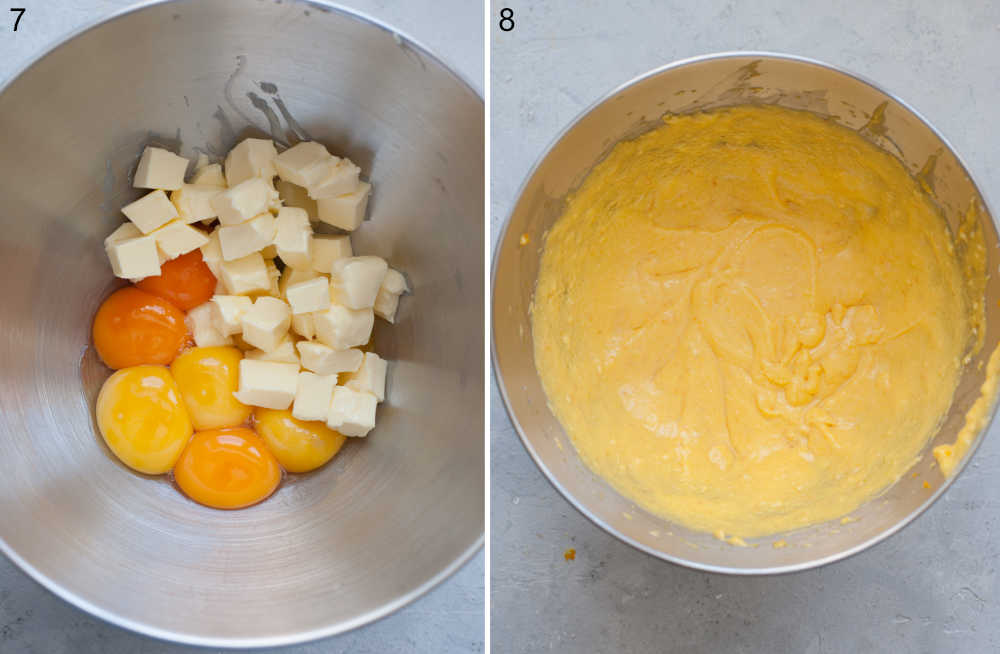
7+8: Beat the egg yolks with soft butter, 1/2 of the sugar, and orange zest until well-combined and fluffy. Use an electric mixer or a stand mixer fitted with a whisk attachment.
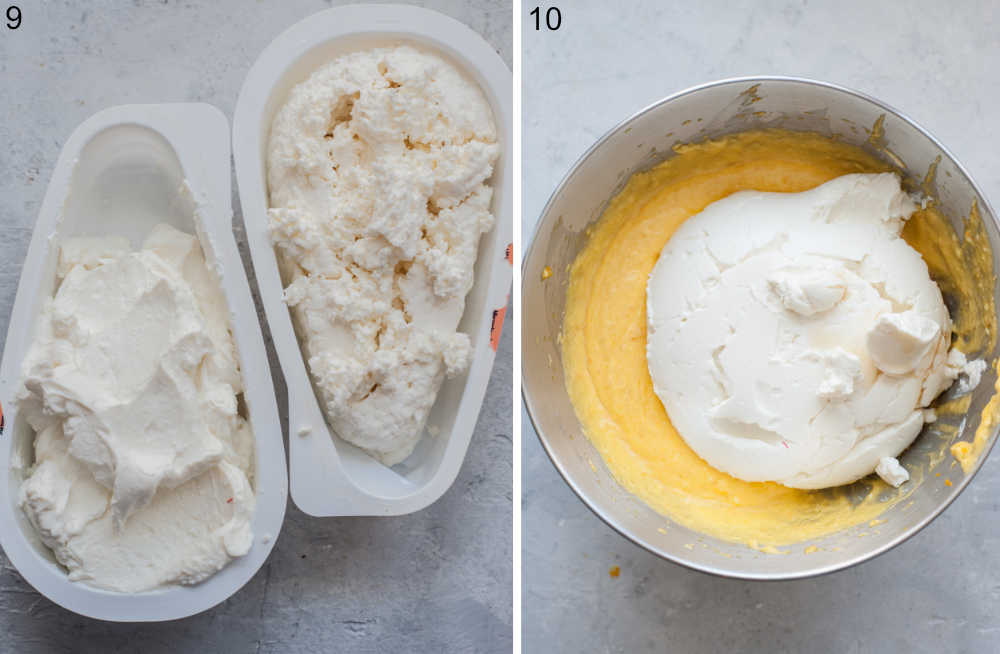
9) Process the cheese in a food processor until smooth (it doesn’t have to be completely smooth, a couple of small lumps are fine). Photo 9 shows pureed cheese on the left and twarog cheese in its natural form (curds) on the right.
10+11: Add the cheese and vanilla extract, beat until combined.
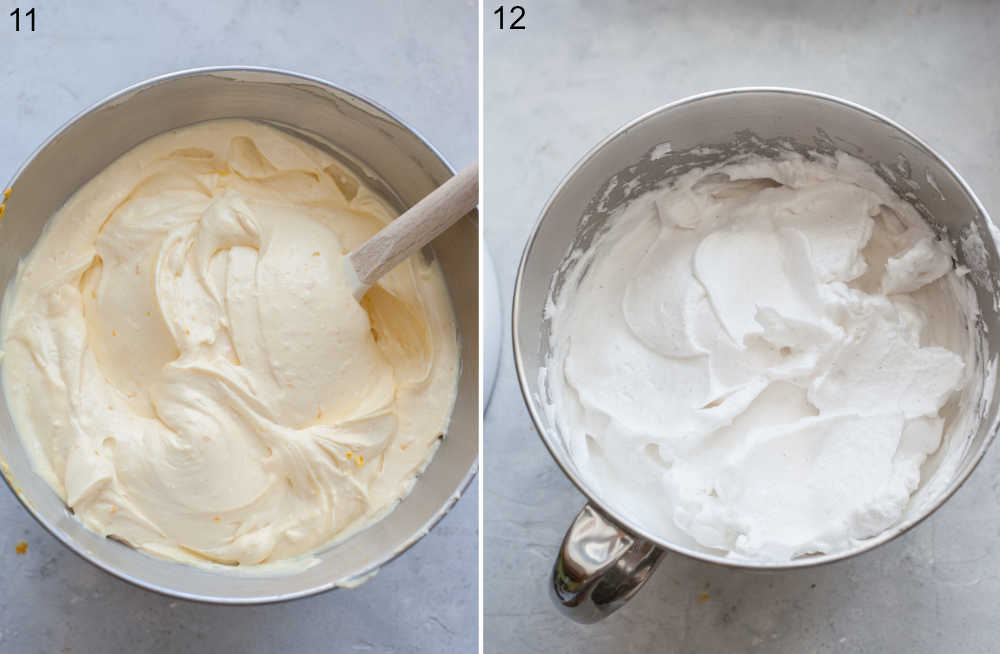
12) In a separate, very large and clean bowl, beat the egg whites (with a clean whisk attachment) until soft peaks form. Slowly add the remaining sugar and beat the egg whites until stiff. Add the vanilla pudding powder and beat until combined.
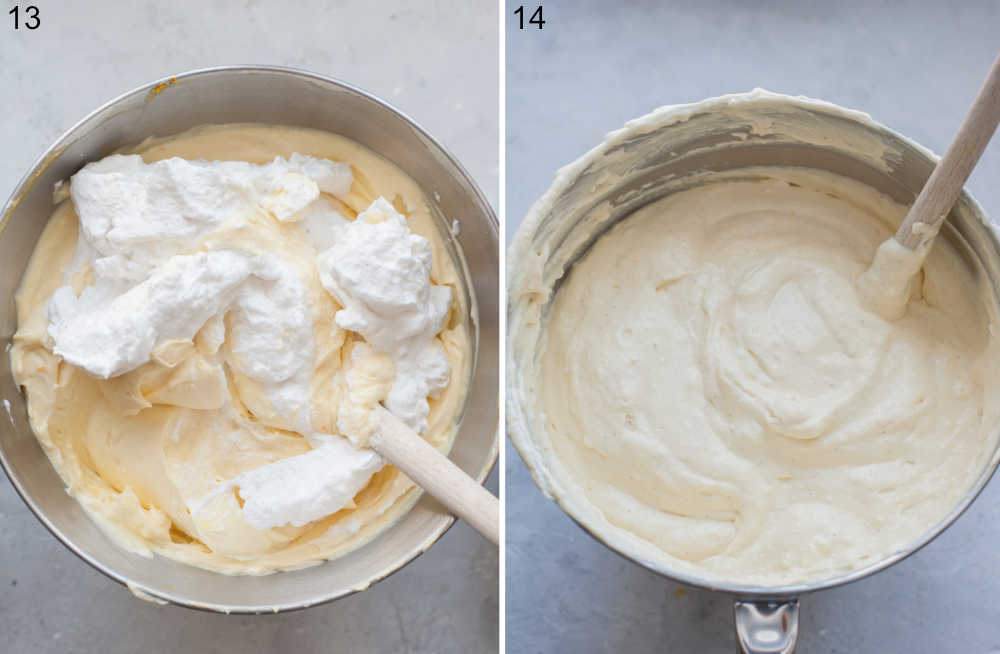
13) Add about 1/4 of the beaten egg whites to the cheese batter, fold in with a spatula until combined.
14) Add the cheese batter to the remaining egg whites. Fold in gently with a spatula until combined and there are no white strikes of egg whites.
Bake the cheesecake:
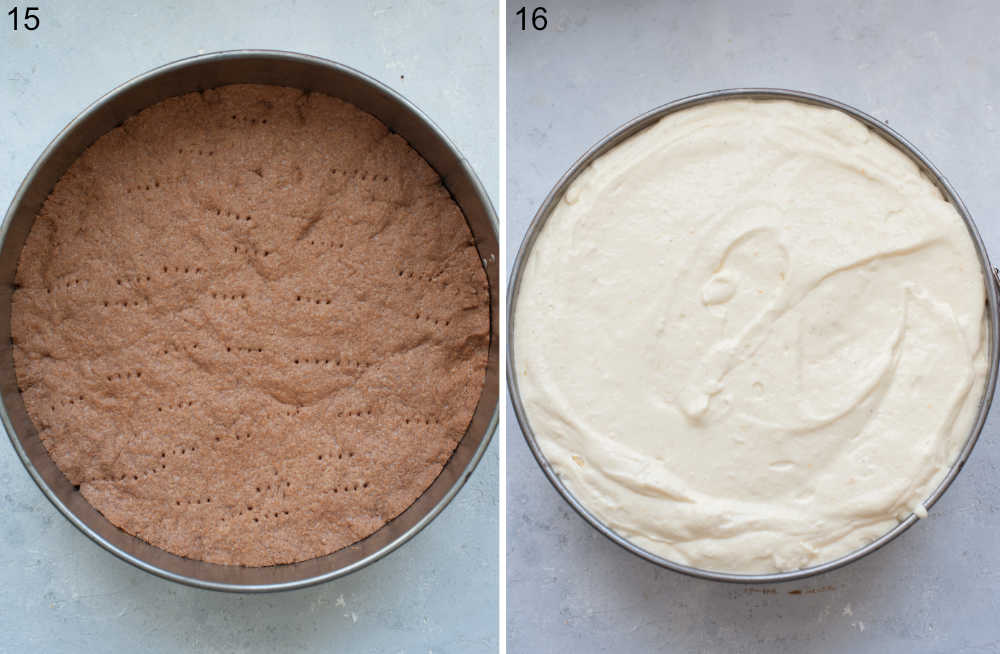
15+16) Pour the cheese batter onto the warm, baked crust. The batter will reach almost to the rim of the pan but don’t worry, it won’t overflow.
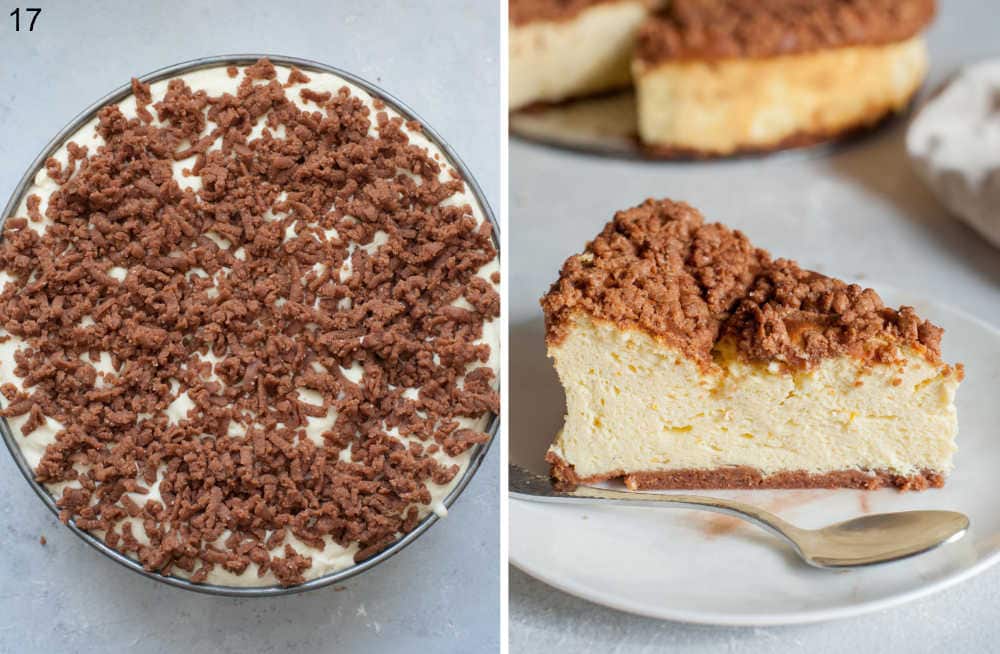
17) Take the second part of the crust out of the fridge and grate it on the large holes of a box grater. Sprinkle the crust onto the cheesecake batter.
Bake the cheesecake for 1 hour and 10 minutes. It will be slightly jiggly in the middle (a little bit like jello) but set. The cheesecake will rise and crack in the middle and then it will fall – it’s just the nature of this cheesecake.
Leave the cheesecake on the cooling rack to cool completely (in the spring form), about 3 hours (do not try to cut warm cheesecake).
Enjoy!
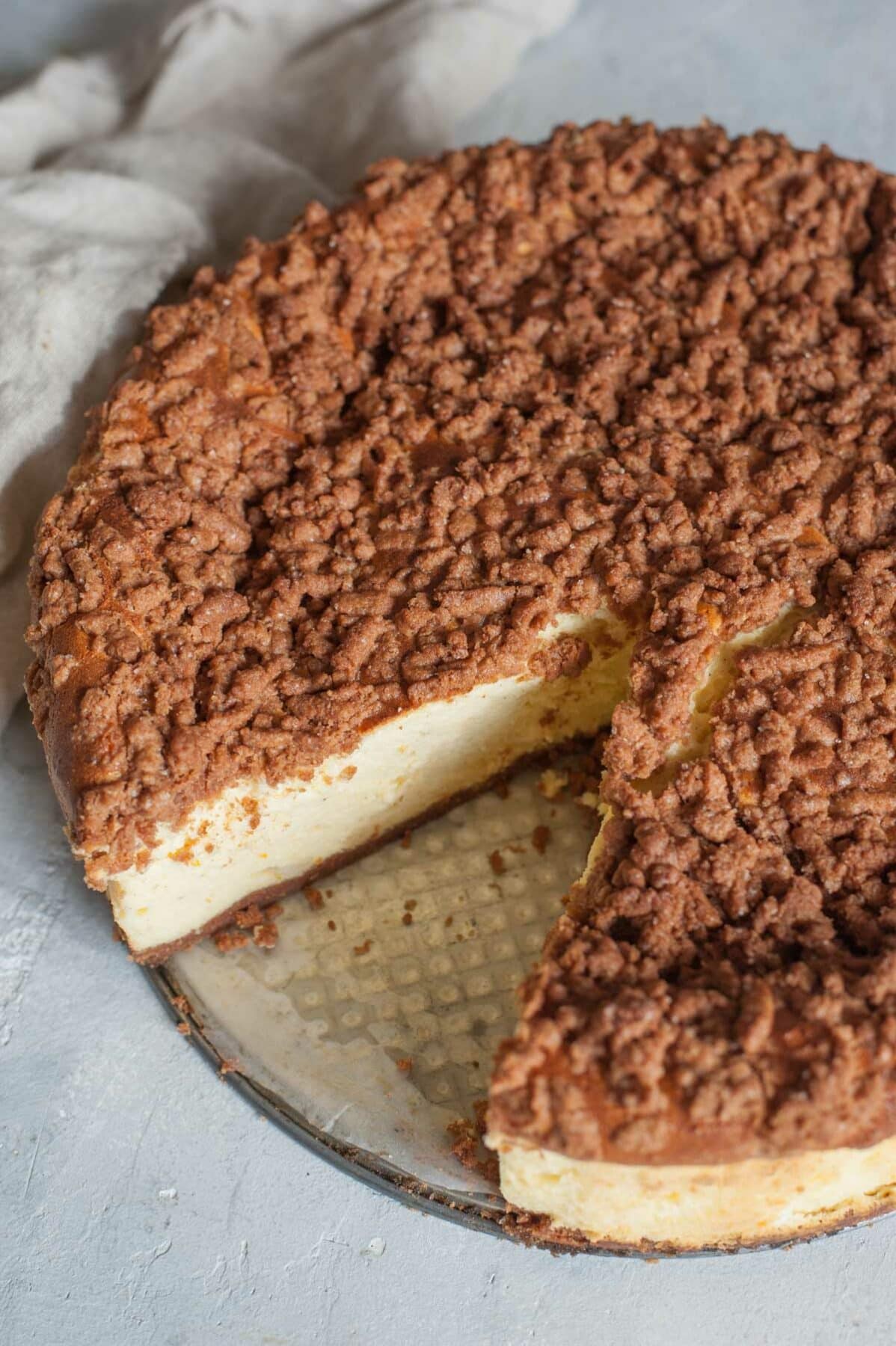
Baking pan
I used a round 10-inch (26cm) springform pan and it was just right. You could also bake this cheesecake in an 9×13-inch (22x33cm) rectangle pan to have more crust to cheese ratio. You would need to make more crust – about 50% more of the recipe.
How to serve it
This cheesecake is really served on its own. Different types of cheesecakes are often served with fresh fruit or fruit compote but this cheesecake is really best just plain.
Storage
This cheesecake will keep for about 4-5 days. You can keep it at room temperature for 2-3 days, in a cool place. If you’ll keep it in the fridge, bring it to room temperature before serving.
Its taste and texture improves with each day. It’s light and fluffy on the day of baking and it becomes more dense the next day, which I actually prefer. The crust is slightly crispy on the day of baking and then it becomes soft.
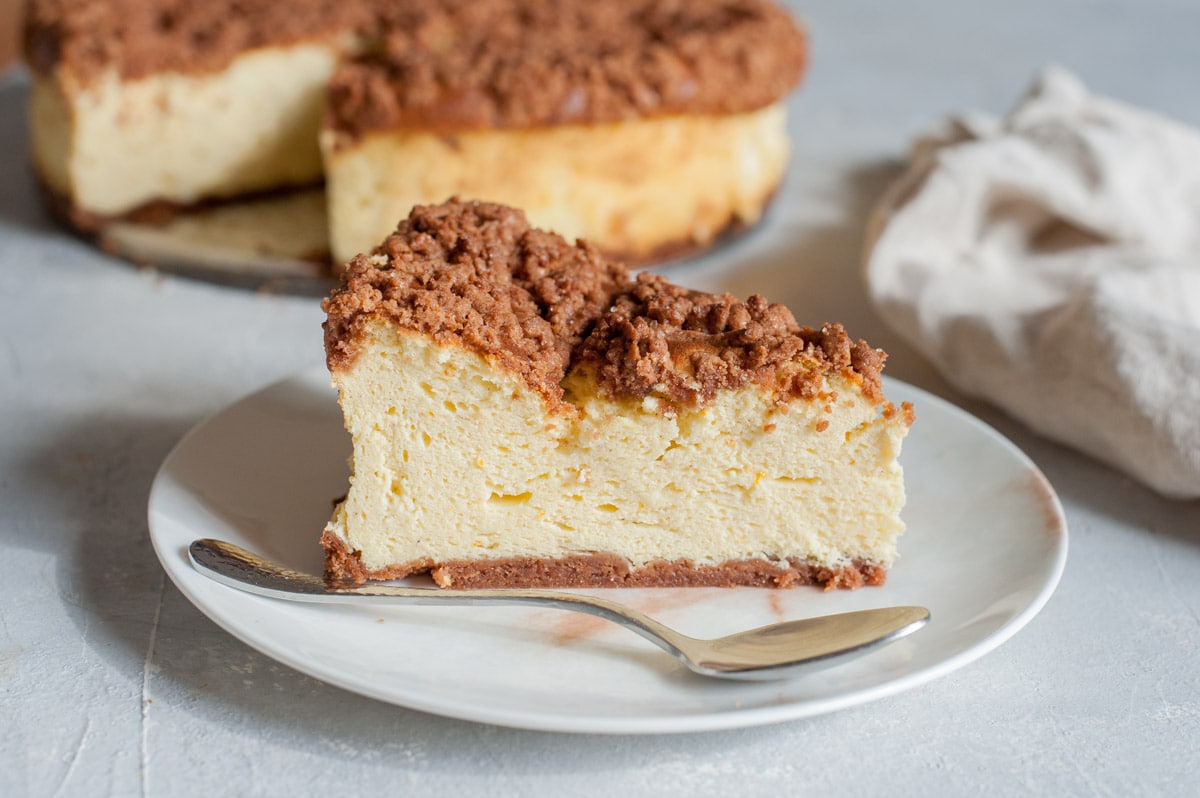
More Polish dessert recipes:
- Polish apple pancakes (with yeast) – racuchy drożdżowe z jabłkami
- Sweet cheese pierogi
- Faworki recipe (Chrusciki or Polish angel wings)
- Naleśniki recipe (Polish crepes with sweet cheese filling)
- Rogaliki recipe (orange walnut rugelach)
- Apple tart with meringue topping (Szarlotka z bezą)
- Nut roll with chocolate (Rolada orzechowa)
- Fluffy sweet steamed buns with blueberry sauce (Pampuchy)
Did you make this recipe? RATE THE RECIPE or tell me in the COMMENTS how you liked it! You can also add a photo of your dish. It would make me very happy and will help other readers. Thank you!!
Polish Cheesecake (Sernik)
składniki
for the crust:
- 2 ¼ cups (280g) flour spooned and leveled
- 3 tablespoons (15g) cocoa powder I used Dutch-processed
- 1 cup (120g) powdered sugar
- 1 teaspoon baking powder
- big pinch of salt
- 1 ½ sticks (175g) cold butter
- 1 egg yolk
- 2 tablespoons sour cream
- 1 teaspoon vanilla extract
for the cheesecake:
- 2.2 lbs (1 kg) twaróg cheese (farmer's cheese)
- 6 large eggs
- 1 ¼ cups (250g) granulated sugar
- 3 tablespoon (28g) corn starch
- 1 tablespoon grated orange zest
- 1 tablespoon vanilla extract
- 2 sticks – 2 tablespoons soft butter (200g/7ounces)
Would you like to save this?
wykonanie
Make the crust:
- Stir the flour, cocoa powder, sugar, baking powder, and salt together.
- Add the egg yolk, sour cream, vanilla extract, and cold butter (cut into small cubes).
- Rub the ingredients between your fingers or mix with a stand mixer fitted with a paddle attachment until the dough comes together. It will look crumbly at first but it will soon form a smooth dough.
- Divide the dough into two parts. One part should be slightly bigger than the other part (about 3 Tbsp), flatten each part into a flat disc, wrap in plastic foil, and put in a fridge for 45 minutes.
Bake the crust:
- Preheat the oven to 350°F (175°C), Gas Mark 4, no fan.
- Grease a 10-inch (26cm) springform pan with butter (grease the sides generously) and line the bottom of the pan with parchment paper.
- Transfer the smaller part of the crust to the freezer. Take the larger part of the crust and tear it into pieces (or cut with a knife if it's too firm). Flatten the pieces and press them into the pan to cover its bottom.
- Prick the crust with a fork several times.
- Bake the crust for 20 minutes.
- While the crust is baking make the cheesecake batter.
Make the cheesecake:
- Process the cheese in a food processor until smooth (it doesn't have to be completely smooth, a couple of small lumps are fine). Alternatively, you can put the cheese two times through a meat grinder (use a plate with small holes).
- Separate the eggs into egg yolks and egg whites. Make sure there is no egg yolk in the egg whites or you won’t be able to beat them properly.
- Beat the egg yolks with soft butter, 1/2 of the sugar, and orange zest until combined. Use an electric mixer or a stand mixer fitted with a whisk attachment.
- Add the cheese and vanilla extract, beat until combined.
- In a separate, very large and clean bowl, beat the egg whites (with a clean whisk attachment) until soft peaks form. Slowly add the remaining sugar and beat the egg whites until stiff. Add the corn starch and beat until combined.
- Add about 1/4 of the beaten egg whites to the cheese batter, fold in with a spatula until combined.
- Add the cheese batter to the remaining egg whites. Fold in gently with a spatula until combined and there are no white strikes of egg whites.
Bake the cheesecake:
- Pour the cheese batter onto the warm, baked crust. The batter will reach almost to the rim of the pan but don’t worry, it won’t overflow.
- Take the second part of the crust out of the freezer and grate it on the large holes of a box grater. Sprinkle the crust onto the cheesecake batter.
- Bake the cheesecake for 1 hour to 1 hour and 10 minutes. Turn off the oven and open the oven door slightly. Leave the cheesecake in the oven for 10 minutes then take it out and place on a cooling rack. It will be slightly jiggly in the middle but set. The cheesecake will rise and crack in the middle and then it will fall – it's just the nature of this cheesecake.
- Leave the cheesecake on the cooling rack to cool completely (in the springform pan), at least 3 hours (do not try to cut warm cheesecake) but preferably overnight (it has a better texture and flavor).
- Enjoy!
uwagi
- Instant vanilla pudding powder: mine has just corn starch and ground vanilla beans in the ingredients so you can substitute corn starch and 1 ts of vanilla extract.
- Baking pan: I used a round 10-inch (26cm) springform pan and it was just right. You could also bake this cheesecake in a 9×13-inch (22x33cm) rectangle pan to have more crust-to-cheese ratio. You would need to make more crust – about 50% more of the recipe.
- How to serve it: This cheesecake is really served on its own. Different types of cheesecakes are often served with fresh fruit or fruit compote but this cheesecake is really best just plain.
- Storage: This cheesecake will keep for about 4-5 days. You can keep it at room temperature for 2-3 days, in a cool place. If you’ll keep it in the fridge, bring it to room temperature before serving. Its taste and texture improves with each day. It’s light and fluffy on the day of baking and it becomes more dense the next day, which I actually prefer. The crust is slightly crispy on the day of baking and then it becomes soft.
- How to measure flour: Fluff the flour by stirring it in the bag/flour container with a spoon. Spoon the flour and sprinkle it into your measuring cup. Sweep off the excess flour with the back of a knife. Note: using a scale yields perfect and consistent results.
- Servings: 1 serving (1/12 of the recipe). This is only an estimate!

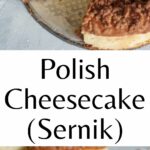
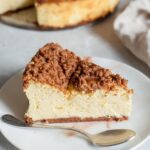
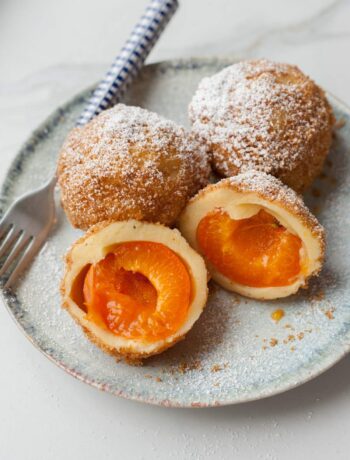
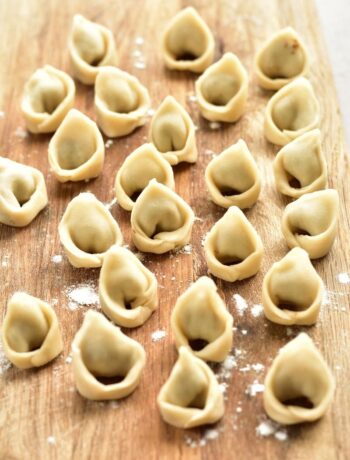
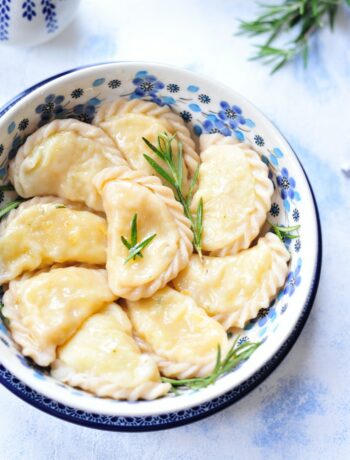
8 komentarzy
Mary Kay
12 stycznia 2025 o 00:45Thank you for sharing this recipe! I was unable to find the correct cheese, so I used cream cheese and it turned out great! I miss the flavor of the correct cheese though. My grandmother made the real deal and I miss it! This is an awesome recipe though and I thank you for sharing it!
Aleksandra
12 stycznia 2025 o 15:56I’m glad you liked the cheesecake! I hope you will find the right cheese, there is really a difference in flavor 🙂
Paulina Bednarczyk
22 grudnia 2024 o 18:53How much cornstarch?!
Aleksandra
23 grudnia 2024 o 02:323 tablespoon (28g) corn starch
Eva Jirkova
6 kwietnia 2024 o 08:34What temperature i should set a oven to?
Aleksandra
6 kwietnia 2024 o 16:13350°F (175°C) – everything you need to make the recipe is in the recipe card at the bottom of the page (you can also print it!)
Jessica
9 lipca 2022 o 16:09We don’t have vanilla pudding powder in the uk, is there a substitute?
Aleksandra
9 lipca 2022 o 18:29I think it may be called instant custard in the UK. It’s just a powder that you add hot milk to and you get vanilla pudding/custard. Vanilla pudding powder where I live has just corn starch and ground vanilla pods in the ingredient list so you can substitute with that (or vanilla extract/vanilla paste/vanilla beans), it is not sweetened. After some further reading, I think corn starch is called corn flour in the UK. I hope this helps, if not, don’t hesitate to ask! One more thing, if you’re already buying twarog cheese in a Polish grocery store, ask for „budyń waniliowy w proszku” (not sweetened, because there is sweetened and unsweetened).